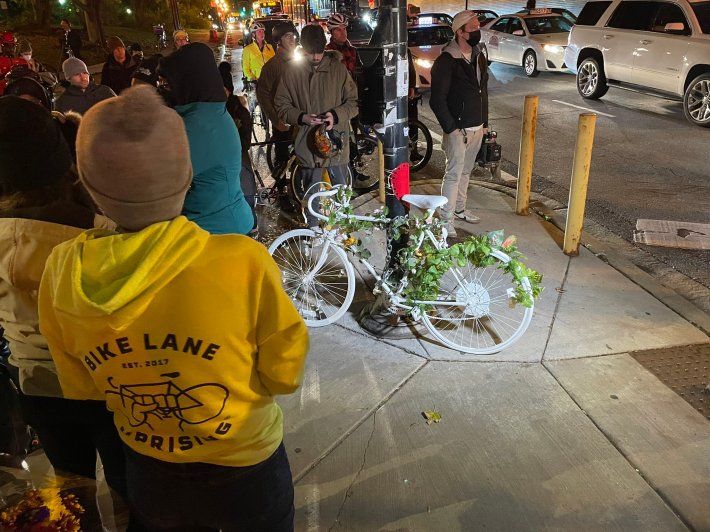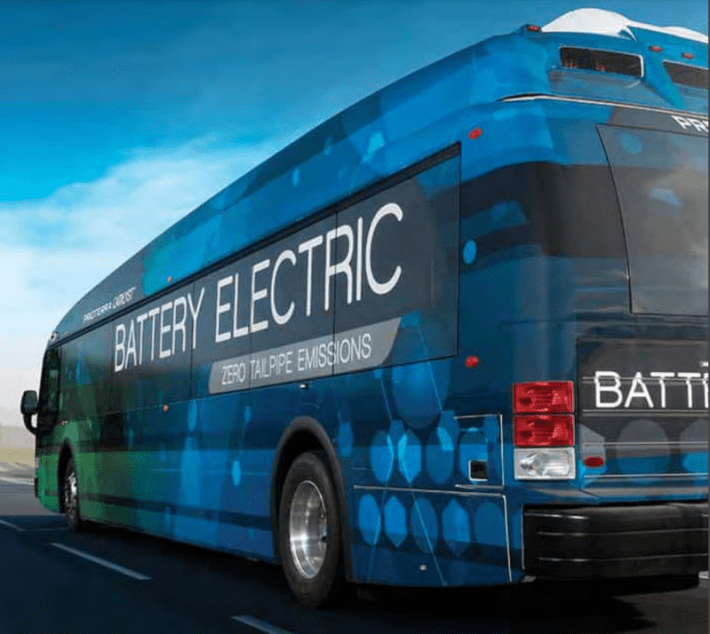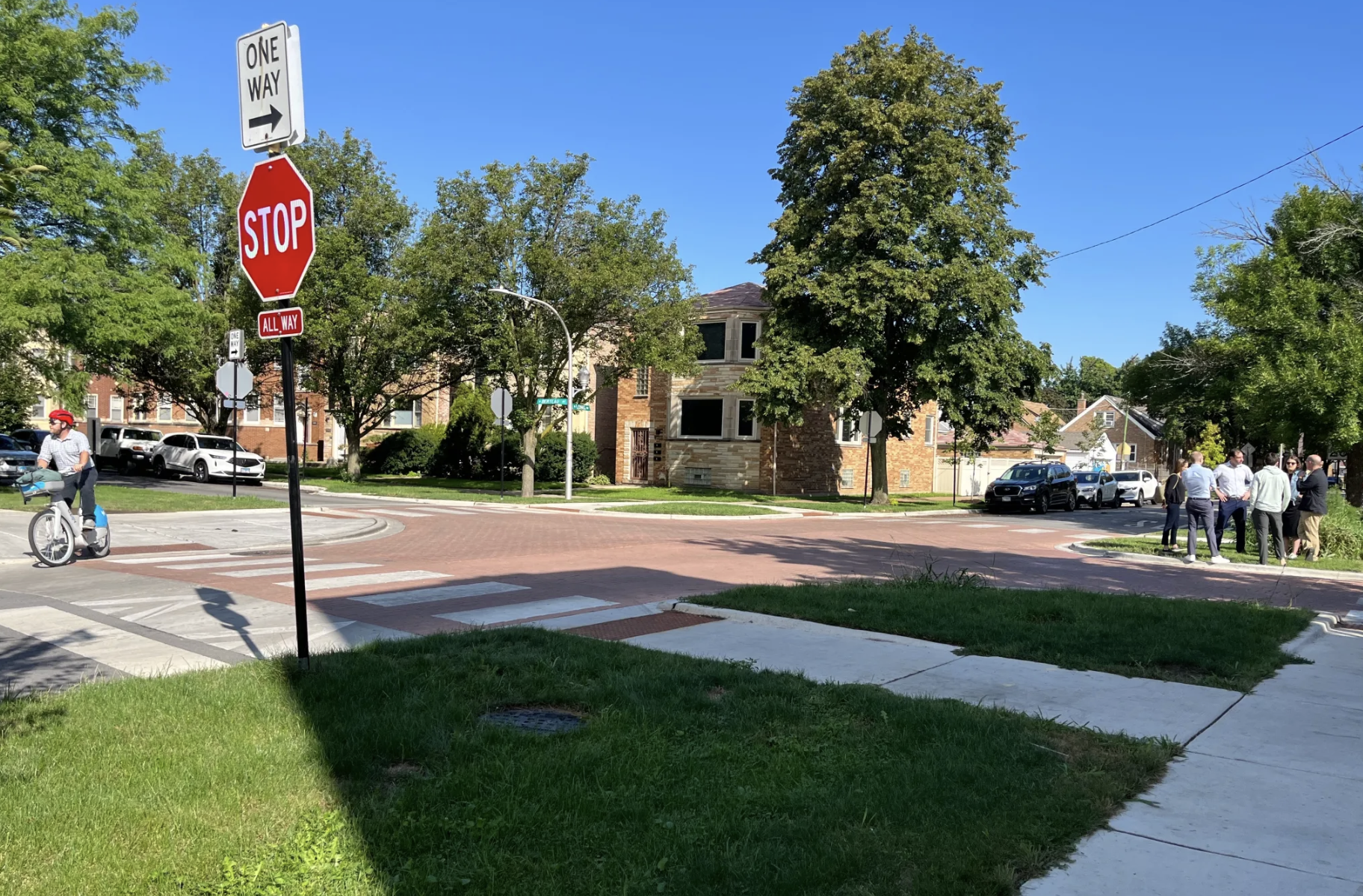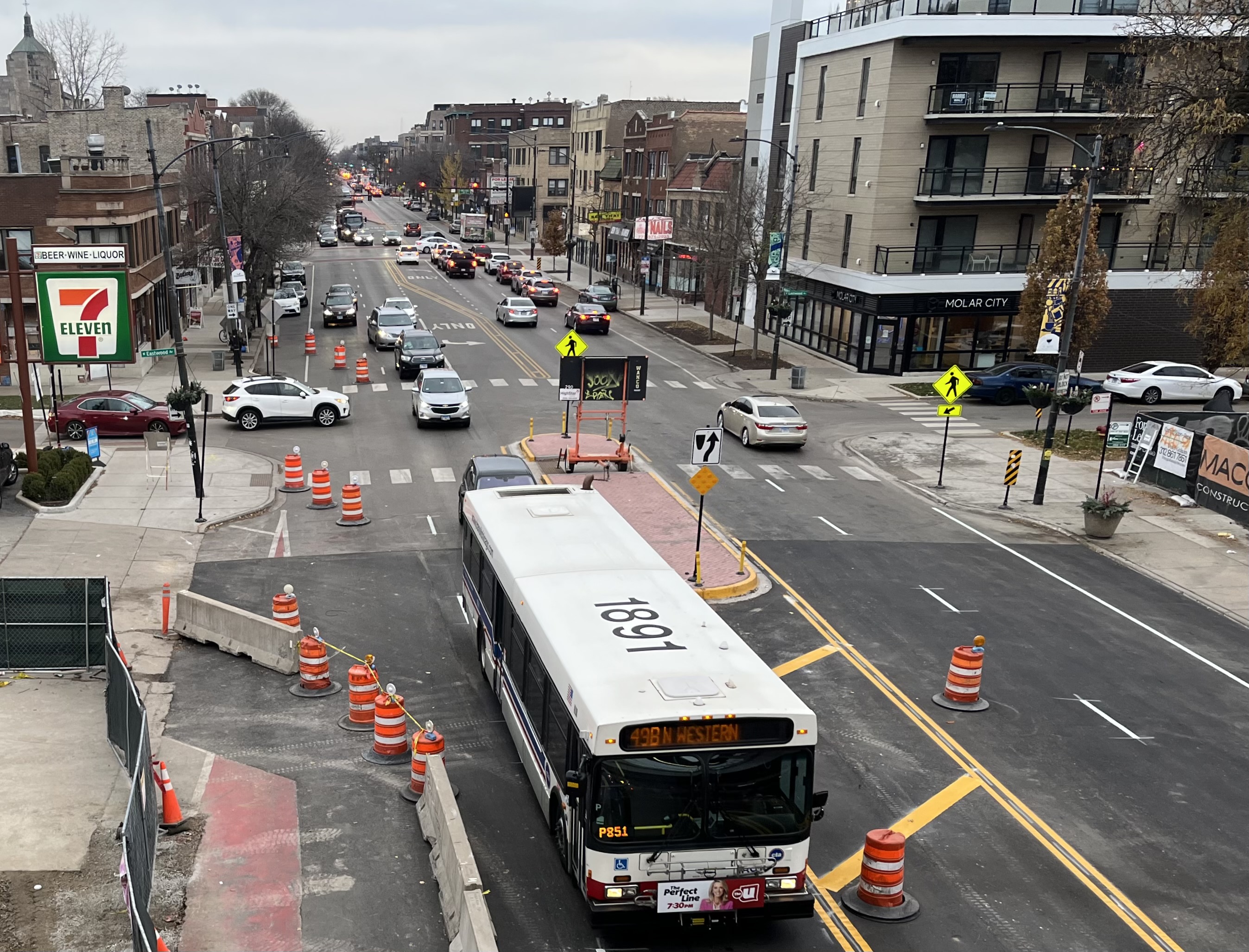
Livable streets advocates all over the country are buzzing about DC’s far-sighted new transportation plan, called MoveDC. So yesterday Streetsblog sat down with some of the people responsible for writing and implementing the plan. I spoke to Matt Brown, the District Department of Transportation's new acting director; Colleen Hawkinson, strategic planning branch manager at DDOT’s Policy, Planning and Sustainability Administration (PPSA); and Sam Zimbabwe, associate director of the PPSA.
MoveDC is an ambitious and wide-ranging plan that calls for overhauling streets to improve walking, biking, and transit. If you want to absorb it all, here's the whole, massive document.
What’s your favorite part of this plan? What do you brag to other cities about and say, “DC’s gonna do this and it’s gonna be amazing”?

MB: I’m struck by the comprehensive nature of it all. It speaks to new investments, but it also speaks to state of good repair for what we have, and really trying to maximize the road system we have so that it accommodates all choices of travel.
I don’t think it’s an all-or-nothing plan. I don’t think it’s: “We have a vision, we need whatever dollars and without that it’s going to fail.” Certainly there are dollars that are needed to implement, and we can't realize the full capacity of the plan without doing that.
But I think this is a plan for the future of the District, and also for our agency. I mean, there are recommendations in here about how to prioritize sidewalk repairs better. One of the recommendations is to better prioritize how we make investments with the baseline money that we have.
So I guess it’s not one policy element I’m excited about. I'm excited there’s so much, and they’re interrelated but they’re not dependent on each other. We can make a big impact even if we can't build a downtown metro loop, or pick your favorite infrastructure investment from the plan.
SZ: Or a downtown congestion charge!
[All laugh.]
Yeah, I definitely want to talk about that. If that’s your most exciting thing, we can talk about that now, or we can talk about it when we get to my most exciting thing.

CH: What I was most excited about was the level of analysis. It’s not just a study that says, "Here are some good ideas; let’s go and do more studies." I feel like we really have a true sense of what should be going on. And I think it’ll even help us as the plan evolves, if things come out and other things go in; I don’t think anything will be jarring, because of the baseline analysis we have there.
SZ: In terms of bragging to other cities, I think this idea of complete networks is where we need to go. And this is not a criticism of Complete Streets at all, because I think the premise is the right one, that we need to accommodate multiple users of every street. But in applying that citywide, in some ways Complete Streets bogs us down. Because we don’t have the right-of-way. We don’t have the space to accommodate everybody.
If you are looking at making a transit improvement and the cyclists say, "Well, where am I in this street?" and if you’re not accommodating them in that street, you’ve failed. I think we’ve identified complete corridors, or complete networks.
And you don’t want streets a quarter of a mile wide.
SZ: Exactly. We have a great urban fabric and we don’t want to lose that in the name of providing for everybody to make every choice on every street.
We weren’t trying to pit modes against each other. We were trying to say, here’s a connected network that addresses the fundamental vision of the transportation system. And then we were able to blend between them. So we ended up with this policy framework, which then translates into infrastructure, that says, “Every street’s going to prioritize pedestrians. Every street’s going to accommodate vehicles. And every street is going to do something else.”
That is, everything above a local neighborhood street. But everything else is going to do something besides just carry cars and people. That might be better transit facilities; it might be better bike facilities; it might be a freight route.
Once you do that, you give yourself flexibility. So ideally, once we start planning for anything, whether it’s a bike lane or a transit facility, we're not having to answer the question of, what about this other mode? Because we’ve tried to de-conflict them. And we can say, well, we’re planning for bikes on this street and we’re planning for transit on that street. And we’ll still evaluate how those interact.
But there is an incredible amount of bike infrastructure. Cycle tracks, especially, going from three miles to 72 miles.
SZ: We’re at five now!
In that case I think I need to correct a tweet. But, that’s stunning. And you’re not taking away vehicle capacity?

SZ: Oh, we could. As we did our analysis, very often there would be a choice between vehicular capacity and parking capacity. And we erred in this plan on the side of vehicular capacity. And we did that partly because it gave us some absolutes: At least we’re being conservative on a consistent basis. But some of these could result in a reduction in number of lanes, or tradeoffs in parking, or it might be that we start with an unprotected bike lane sometimes where in the vision plan we’ve got a protected bike lane.
But you know, we’ve done a lot of the easy bike lanes. So a lot of our facilities now will take some other impact. And that’s partly been the challenge in the last few years. We were able to quickly deploy a lot when there’s not much impact, but as you start to make tradeoffs -- you know, L and M Streets downtown, there’s a tradeoff. And that takes more conscious decision-making.
But there is an attraction and a benefit to making protected facilities, and we felt that was something that was important to carry forward.
CH: The number of cycle tracks absolutely is stunning, and it’s very exciting. But compared to miles of roadway -- they will never be equal, but we’re just trying to balance out different modes so that people are able to make different choices.
I appreciate that. People didn’t used to think about balancing out accommodation for bicycles with roadways. That’s a pretty new way of thinking. So, you guys touched on so many things I wanted to get back to and now I can’t remember what I wanted to ask next.
SZ: Congestion charge?
OK, let’s do it. So, that’s something that New York tried to do, but they couldn’t get it through the state. We don’t have a state government.
SZ: We have another building up there [the U.S. Capitol] that likes to be the state.
Right. So is there a reason to think this is going to go better in DC than in New York? Is there appetite for a congestion charge outside of this building?
SZ: It will take continued engagement and planning. We did an exercise really early on in the planning process and we asked people what types of things they would like to see in the system. But you had to tell us how you would pay for it. And that give us great intelligence.
And did you tell people how much things would cost?
SZ: No, we were mostly trying to put the idea in people’s heads that you can't just get everything you want without some tradeoffs. So I would say the plurality of answers about how people would pay for things was to tie congestion relief downtown to funding these other items.
People were saying congestion relief should be a funding source?
SZ: Yes. We felt it’s a policy approach; it’s not really about the funding per se. It’s not a huge amount of money, especially in the assumptions that we made.
It really resonated, and we got good feedback through our workshops about it, in theory. We felt it’s an important thing to continue to consider.
It’s one of those things, like raising the gas tax or any number of other things, that if you have the time and space to speak rationally to people who are thinking openly, you can explain this and it makes so much sense. But it’s so quickly misconstrued in the media as just another tax, and people get riled up about it. It’s a hard thing to sell.
SZ: Yes, it’s been the headline of every story that’s been written about the plan so far. And it’s this minor component -- obviously it’s not a minor thing, if it happens, but it’s just one thing out of many, many things that are part of the plan. But we understood that might happen.
The interview continues in part two, coming soon!





